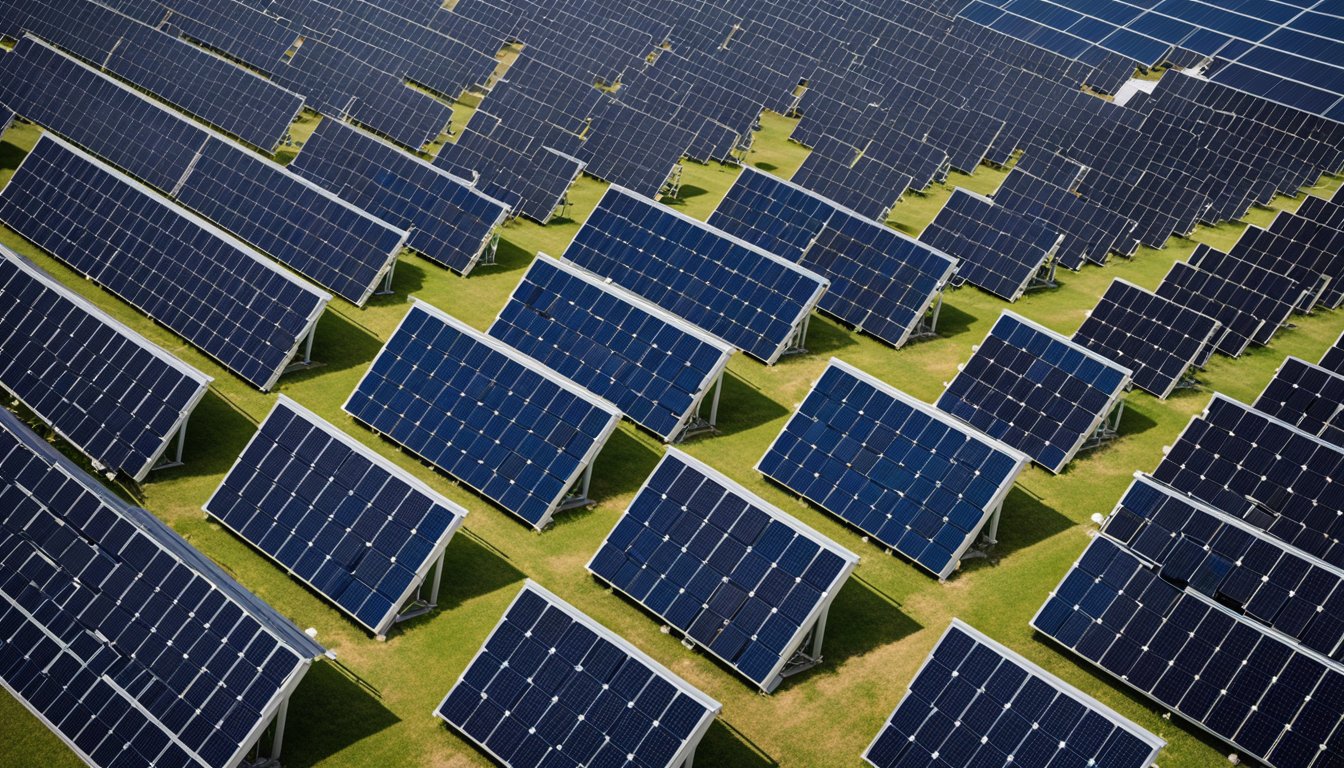Late updated: 09 Aug 2024 11:08
Written by: Eleanor Hartman
Innovative Ways To Store Renewable Energy: Advanced Solutions for a Sustainable Future
As the world shifts towards cleaner and more sustainable energy sources, finding innovative ways to store renewable energy has become essential. From utilising sand batteries to manipulating gravity, these cutting-edge technologies are revolutionising our approach to energy storage. Exploring these methods is crucial for maximising the efficiency and reliability of renewable electricity.

One groundbreaking approach involves liquid air energy storage (LAES), which leverages existing technology with a lifespan of over 30 years. There is also the fascinating potential of using sand as a large-scale storage solution. We are witnessing a transformation in energy storage that promises to make clean energy more accessible and dependable.
In addition, gravity energy storage systems are redefining how we think about storing power. Gravitricity, a company from the UK, is developing a method that harnesses gravity by using electricity to lift weights, storing energy in the process. Such innovations not only optimise our energy grid but also hold significant promise for mitigating climate change.
Key Takeaways
- Multiple innovative technologies are advancing renewable energy storage.
- These methods improve energy grid optimisation and reliability.
- Understanding these solutions is vital for addressing climate change.
Technologies for Storing Renewable Energy
In exploring the ways to store renewable energy, we focus on advancements in battery technology, mechanical and alternative storage systems, and emerging chemical storage solutions.
Advancements in Battery Technology
The development of lithium-ion batteries has been pivotal for renewable energy storage. These batteries are known for their high energy density, making them suitable for applications such as electric vehicles. Lithium-ion technology uses a cathode, anode, and electrolyte to store and release energy.
Despite their high efficiency of around 99%, issues like cobalt availability and the environmental impact of recycling components present challenges. Researchers are investigating alternatives such as solid-state batteries, which promise greater safety and higher capacity. Flow batteries are also showing potential, particularly for large-scale storage, as they use liquid electrolytes stored in external tanks, allowing for scalability and longer discharge times.
Mechanical and Alternative Storage Systems
Pumped hydro energy storage remains a widely used method for storing excess renewable energy. By moving water between a lower reservoir and an upper dam, potential energy is stored and later converted back to electricity. This method is seen in facilities like the Hoover Dam.
Compressed air energy storage is another method, where excess energy compresses air stored in underground caverns. When energy demand is high, the air is released to generate power. Additionally, gravity-based systems, such as those being developed by Energy Vault, use kinetic energy to lift heavy blocks, storing energy that is later released as the blocks descend.
Emerging Chemical Storage Solutions
Utilising hydrogen through electrolysis is gaining attention. This process involves splitting water into hydrogen and oxygen, storing the hydrogen for later use in power generation. Hydrogen can also be converted to ammonia for easier storage and transport.
Flow batteries add a noteworthy dimension to chemical storage by using liquid electrolytes. These systems can be sized easily by increasing the tank capacity, making them ideal for grid-scale storage. The Department of Energy is supporting research into these technologies to address cost, efficiency, and scalability issues, aiming for a sustainable future in renewable energy storage.
Integration and Grid Optimization

In integrating renewable energy sources with the electricity grid, enhancing grid resilience and employing smart technology for energy management are key areas of focus. These methods enable us to efficiently manage and store renewable energy, ensuring a stable and reliable supply.
Enhancing Grid Resilience with Renewables
Renewable energy sources like solar and wind power can be volatile, leading to challenges in grid stability. By incorporating energy storage solutions such as batteries and pumped hydro storage, we can mitigate these fluctuations. This ensures a continuous supply of electricity even when the sun isn't shining or the wind isn't blowing.
Grid resilience is further strengthened by diversifying energy sources, combining solar panels, wind turbines, and offshore wind farms. Advanced monitoring systems are also crucial, providing real-time data to predict and respond to grid disturbances promptly. Researchers and engineers continuously work on developing better energy storage technologies and integration techniques to ensure a robust and resilient grid.
Smart Technology and Energy Management
The integration of smart grids and renewable energy relies heavily on advanced technology. Smart grids use AI and machine learning to optimise energy distribution, balance supply and demand, and enhance overall efficiency. These systems can communicate with each other and make real-time adjustments based on energy consumption patterns and weather conditions.
Demand side management is another critical aspect, allowing us to shift or reduce energy usage during peak hours. This is particularly useful for integrating renewable sources, which can be unpredictable. Electric vehicles, equipped with bidirectional chargers, can act as mobile energy storage units, supplying power back to the grid when needed.
Smart meters and IoT devices track usage and performance, ensuring optimal operation and minimal wastage. By leveraging these technologies, we can create a flexible, efficient, and responsive grid capable of supporting a wide array of renewable energy sources.
Frequently Asked Questions

Innovative energy storage solutions are pivotal for maximising the efficiency and reliability of renewable sources. Here, we answer key questions about the technology and companies leading this field.
What are the leading types of energy storage systems for renewable sources?
Energy storage systems for renewable sources include batteries, thermal storage, compressed air energy storage, and pumped hydroelectric storage. Each has unique benefits. Batteries are versatile and scalable. Thermal storage is particularly useful for industrial applications. Compressed air systems utilise underground caverns, whereas pumped hydroelectric storage relies on gravity and elevation changes.
How can electricity be stored at domestic levels using renewable energy technology?
At the domestic level, homeowners can store electricity generated from solar panels using home battery systems such as Tesla's Powerwall. Additionally, solar thermal systems can store heat for later use. Smart grid technology and demand response systems help balance consumption, making renewable energy more practical for everyday use.
Which companies are at the forefront of renewable energy storage innovation?
Several companies stand out in renewable energy storage. Tesla is prominent with its Powerwall and large-scale battery projects. Siemens Gamesa focuses on thermal energy storage solutions. Gravitricity is pioneering gravity-based storage systems. These companies, among others, are pushing the boundaries of how we store and use renewable energy.
What are the primary challenges faced by renewable energy storage technologies?
Key challenges include high costs, limited storage capacity, and efficiency losses during energy conversion. Additionally, the environmental impact of battery production and disposal poses concerns. Infrastructure and grid compatibility are also significant hurdles that need to be addressed for broader adoption.
Which energy storage solutions offer the greatest potential for renewable energy systems?
Pumped hydroelectric storage and advanced battery technologies, such as those using lithium-ion and beyond, offer the greatest potential. Pumped hydro is highly efficient and suitable for large-scale storage, while advancements in battery technology continue to improve energy density and reduce costs, making them more viable for widespread use.
Aside from batteries, what alternative methods exist for storing energy from renewable sources?
Alternative storage methods include thermal energy storage, compressed air energy storage, and gravity energy storage. Thermal storage can store excess heat or cold for later use. Compressed air systems make use of subterranean caverns. Gravity energy storage employs weights and winches to store and release energy efficiently.